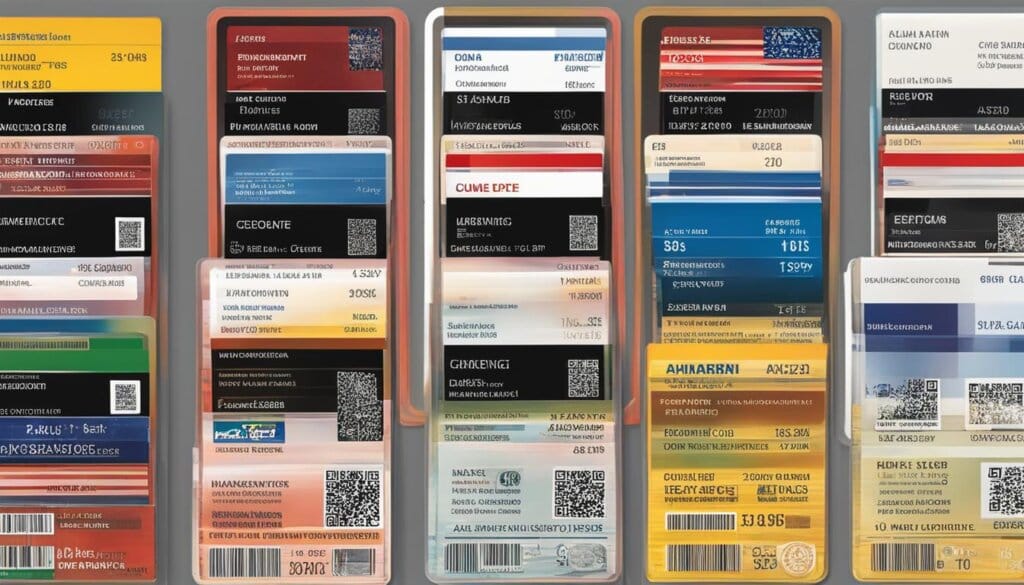Table of Contents
A unique identifier (UID) is a numeric or alphanumeric string that is associated with a single entity within a given system. UIDs are used to address and differentiate entities such as individual users, companies, machines, or websites. They can be randomly auto-generated, allocated incrementally, or chosen by the user.
UIDs have various applications in identification systems, ranging from user registration for websites or services to sorting and filtering data in databases. They also play a crucial role in tracing the origin of products in supply chains and ensuring privacy in the healthcare industry.
Examples of UIDs include Uniform Resource Identifiers (URI), Uniform Resource Locators (URL), Universal Unique Identifiers (UUID), and bank identifier codes (BIC). Within the Department of Defense, there are related acronyms like Item Unique Identification (IUID) that track government assets. Understanding the purpose, applications, and significance of UIDs is essential in the context of identification systems.
Uses of Unique Identifiers
Unique identifiers play a crucial role in various contexts, offering a wide range of uses and benefits. Let’s explore some of the key applications of unique identifiers:
- User Registration: In websites and online services, unique identifiers such as usernames or user IDs are assigned to individual users. These identifiers ensure seamless differentiation within the system and enhance security measures.
- Database Management: Unique identifiers are often designated as specific columns or fields in databases. This allows for efficient sorting and filtering of information and facilitates the traceability of data back to specific users or entities.
- Supply Chain Tracking: Manufacturers frequently utilize unique identifiers, such as serial numbers, to mark individual pieces or entire products. These identifiers enable the traceability of product origins and contribute to efficient addressing of issues like malfunction or recall.
- Healthcare Privacy: In the healthcare industry, personal codes are created as unique identifiers instead of using patient names. This approach helps protect privacy and eliminates the possibility of duplicate reports.
Overall, the uses of unique identifiers span across user registration, database management, supply chain tracking, and healthcare privacy. They are pivotal in improving system functionality, ensuring data integrity, and enhancing security measures.
Benefits of Unique Identifiers
Incorporating unique identifiers into various systems and industries brings forth a multitude of benefits:
- Enhanced Security: Unique identifiers provide an additional layer of security by enabling individual user identification and authentication.
- Efficient Data Management: By using unique identifiers in databases, organizations can effectively sort, filter, and trace information.
- Improved Supply Chain Visibility: With unique identifiers, manufacturers can easily track products’ journey in the supply chain, ensuring transparency and addressing potential issues promptly.
- Preservation of Privacy: Unique identifiers in the healthcare industry safeguard patient privacy by replacing personal identification with coded information.
Examples of UIDs
Unique identifiers, also known as UIDs, can take different forms depending on the application. Here are some examples:
- Uniform Resource Identifier (URI): A URI is a string of characters that provides a compact and standardized way to identify or name a resource. It is commonly used in web addresses to locate specific web pages or files. For example, “https://example.com/page1” is a URI that points to a specific webpage.
- Uniform Resource Locator (URL): A URL is a type of URI that specifically identifies the network location of a resource. It is commonly used to access web pages, images, documents, and other online content. For example, “https://example.com/image.jpg” is a URL that points to a specific image file.
- Universal Unique Identifier (UUID): A UUID is a 128-bit identifier that is unique across all devices and time. It is often used in software and computer systems to assign a unique identifier to entities such as files, objects, or database records. UUIDs are typically represented as a sequence of alphanumeric characters, separated by hyphens. For example, “550e8400-e29b-41d4-a716-446655440000” is a UUID.
- Bank Identifier Code (BIC): A BIC is a unique code that identifies a specific bank or financial institution. It is commonly used in international wire transfers and other banking transactions to ensure accurate routing and destination identification. BICs are structured as a combination of letters and numbers. For example, “BARCGB22” is the BIC for Barclays Bank in the United Kingdom.

These examples showcase the diverse range of UIDs and their applications in various industries and systems. Understanding different types of UIDs is crucial for efficient identification, organization, and communication within modern digital environments.
UID vs IUID vs UII
Within the Department of Defense (DoD), there are three related acronyms that play a crucial role in the management and tracking of government property. The Item Unique Identification (IUID) Registry, maintained by the DoD, serves as a centralized repository for information pertaining to the tracking, maintenance, and deployment of government assets. The IUID Registry ensures greater visibility and accountability, enabling better decision-making regarding these valuable resources.
The UID (Unique Identifier) is the physical marking, typically in the form of a barcode, that distinguishes one item from another. It serves as the unique identity of a particular asset within the government inventory. This UID ensures that each item can be easily identified and tracked throughout its lifecycle, from acquisition to retirement.
While the UID represents the physical mark on the item, the Unique Item Identifier (UII) serves as its entry value in a database. These UIIs are machine-readable codes that enable contractors and authorized personnel to digitally track and manage each item associated with the UID. This digital tracking system enhances efficiency, reduces errors, and facilitates comprehensive visibility into the government property system.
Understanding the distinction between UID, IUID, and UII is crucial for effective government property management and tracking systems. These acronyms, along with the support of the Department of Defense and the Item Unique Identification Registry, ensure the accurate inventory management and the efficient utilization of government assets.
FAQ
What is a unique identifier (UID)?
A unique identifier is a numeric or alphanumeric string used to address and differentiate entities within a system, such as individual users, companies, machines, or websites.
What are the uses of unique identifiers?
Unique identifiers have various uses, including user registration for websites or services, sorting and filtering data in databases, tracing the origin of products in supply chains, and ensuring privacy in the healthcare industry.
What are some examples of UIDs?
Examples of UIDs include Uniform Resource Identifiers (URI), Uniform Resource Locators (URL), Universal Unique Identifiers (UUID), and bank identifier codes (BIC).
What is the difference between UID, IUID, and UII?
UID refers to the physical marking on an item, IUID is the registry maintained by the Department of Defense for tracking government assets, and UII represents the entry value of an item in a database, serving as its unique identifier.







